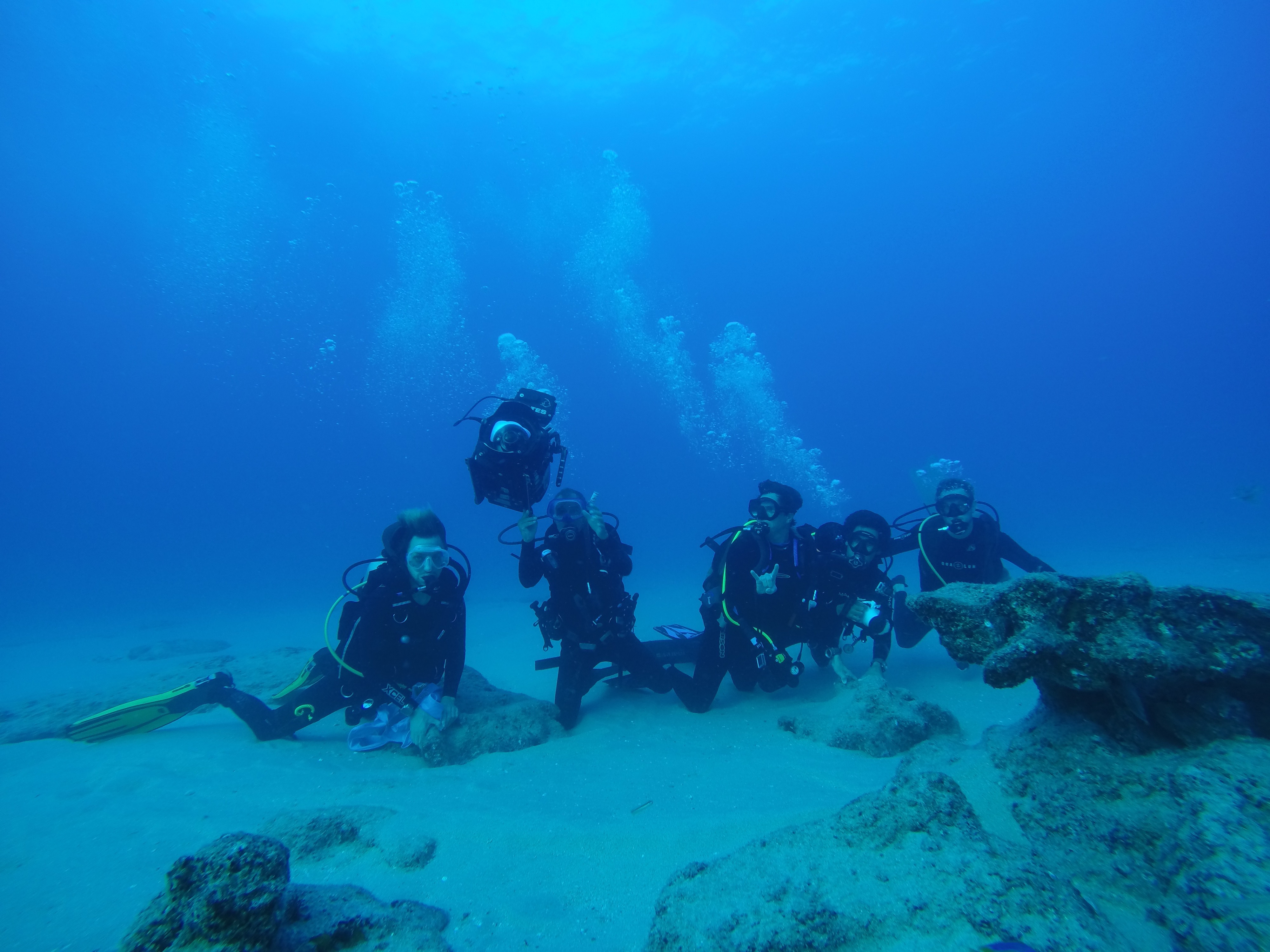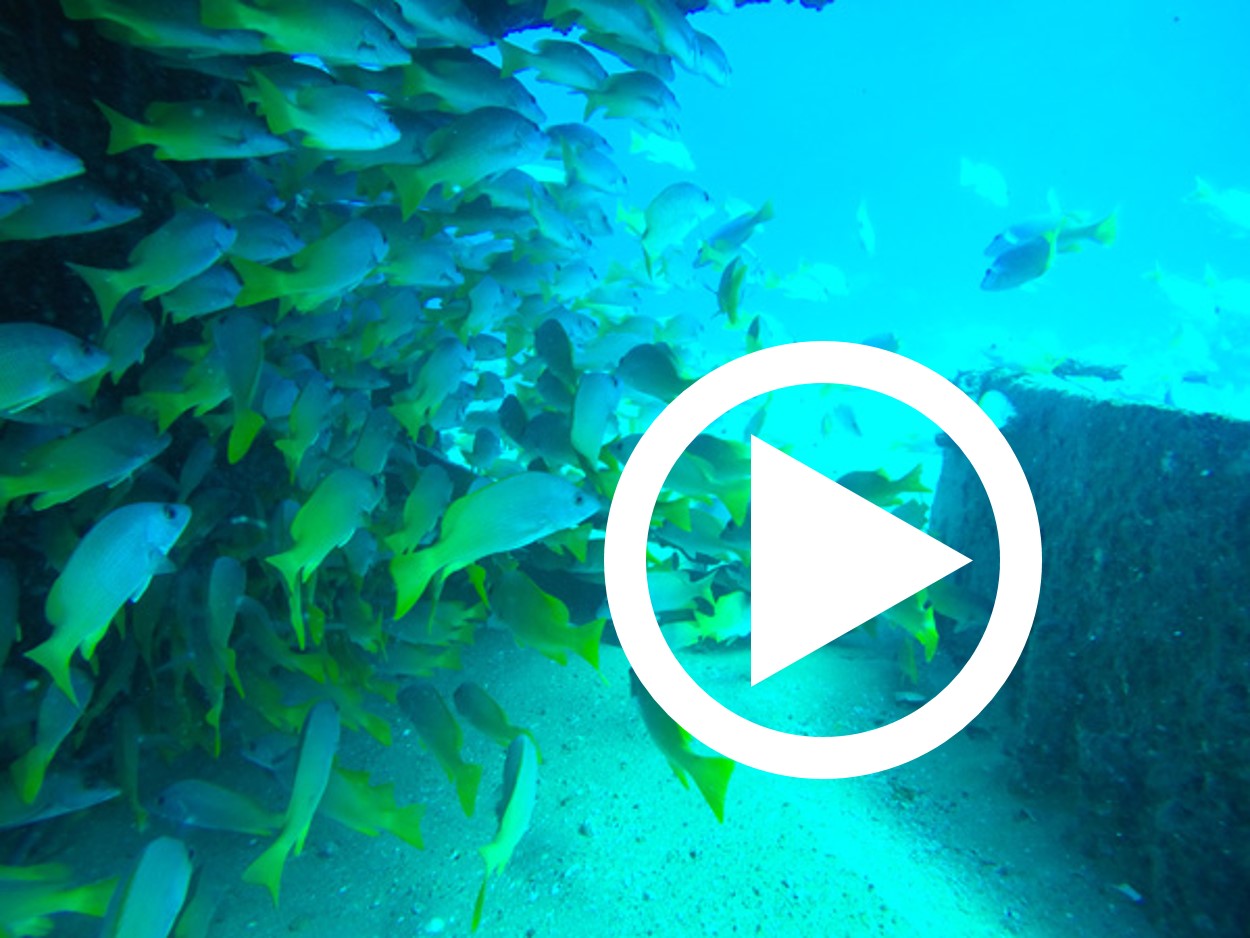Story courtesy of Dr. Andrew Johnson, The Gulf of California Marine Program at SCRIPPS Institution of Oceanography (SIO) University of California San Diego Andrew Johnson, Alfredo Barroso, Brad Erisman, David Ivan Castro and Timothy Rowell pose for a photo following a long reef dive. Courtesy photo.Last week I was lucky enough to be included in a team, headed by Assistant Professor Brad Erisman (Marine Science Institute, The University of Austin, Texas). Our mission was to search for fish spawning aggregations in the Gulf of California. This short blog describes what the trip was all about.
Andrew Johnson, Alfredo Barroso, Brad Erisman, David Ivan Castro and Timothy Rowell pose for a photo following a long reef dive. Courtesy photo.Last week I was lucky enough to be included in a team, headed by Assistant Professor Brad Erisman (Marine Science Institute, The University of Austin, Texas). Our mission was to search for fish spawning aggregations in the Gulf of California. This short blog describes what the trip was all about.
Our first day was an early morning loading Fastball – the boat used for the trip, generously leant to us by a University of Texas Marine Science Institute advisory council member. Cameras, dive equipment, computers and bait were all part of the gear used to help us locate potential spawning sites of Dog Snapper (Lutjanus novenfasciatus), Big Eyed Jack (Caranx sexfasciatus) and Giant Hawkfish (Cirrhitus rivulatus) among other large fish in the Southern Gulf of California.
But why bother? Why is it important to know where fish spawn? Spawning sites are generally small areas of the ocean where many individuals of the same (or in some cases multiple) species come to reproduce in large numbers. Without knowing where such sites are, it is difficult to protect them from overfishing – something which is easy to do considering the large number of individuals in a small space, predictably gathering, normally governed by lunar or tidal cycles.
The aim of the trip was to use a combination of SCUBA dive surveys and deep-rated drop-down camera deployments to locate potential spawning sites of these fish species and others. The boat left from San Jose Del Cabo, Mexico and headed to our most northerly site approximately 100 miles north of La Paz where our first dives took place. The locations of the target spawning aggregations are often at shelf edges where rocky reefs drop off into deeper water that cannot be accessed by SCUBA. For this reason, the daily pattern of events was as follows:
- Use bathymetric charts, the boat’s echo sounder and local knowledge to locate steep shelf drop-offs.
- SCUBA dive on the site (usually along the shelf break scouting out which species were present and what potential spawning behaviors they may be exhibiting). This involved three divers surveying and one cameraman filming for post-dive analysis for fish or behaviors that may have been missed.
- Deploy a drop-down camera system deep off the ledge to look at areas that we could not reach within our allotted dive times and depths.
Our 4 days of exploration covered a lot of ground and the team was very pleased with the results. Dog snapper aggregations, a lot of Giant Hawkfish, and 4 sites to specifically target on the next campaign. Dr Erisman plans to return to these sites in mid-2016 and use a Remotely Operated Vehicle (ROV) to conduct more thorough surveys of fish and habitats. The ROV provides a clear, drive-able live feed, which means the team will be able to monitor aggregations in real time and during the common spawning period which occurs just as the sun goes down (not the best time for SCUBA diving work). This trip was a huge success and has set the foundation for many more explorations and recordings of important fish spawning events in the Gulf of California.
You can read more about spawning aggregations and the importance of protecting them in Dr. Erisman’s recent article.
Please check out a short video of what we saw under water!

—
I would like to thank Jimmy and Martin (Captain and 1st Mate of Fastball) as well as Brad Erisman, Timothy Rowell (PhD Candidate), Alfredo Barroso (Underwater camera man) and David Ivan Castro (Cabo Pulmo divers) for an excellent trip and I look forward to news on the spawning aggregations work and future expeditions.
About the Author: Andrew F Johnson is a Postdoctoral Researcher at SCRIPPS Institution of Oceanography, University of California San Diego. Dr. Johnson’s research focuses on the impacts of marine fisheries on fish populations and habitats. Since beginning his studies in marine biology in 2002, Dr. Johnson has traveled extensively, working with nine different fisheries in six countries gaining valuable experience in a range of fishing methods and management strategies. His doctorate at the School of Ocean Sciences, Bangor University (UK, 2012) focused on determining the habitat requirements of demersal fishes and how this knowledge can be used in MPA design. He is passionate about integrating sound ecological knowledge of fishes and ecosystems with the behaviour and patterns of fisheries in order to help predict the future impacts of current exploitation levels. He aims to use such synergies to aid the Gulf of California Marine Program in the design of future, sustainable management strategies for Mexican fisheries.